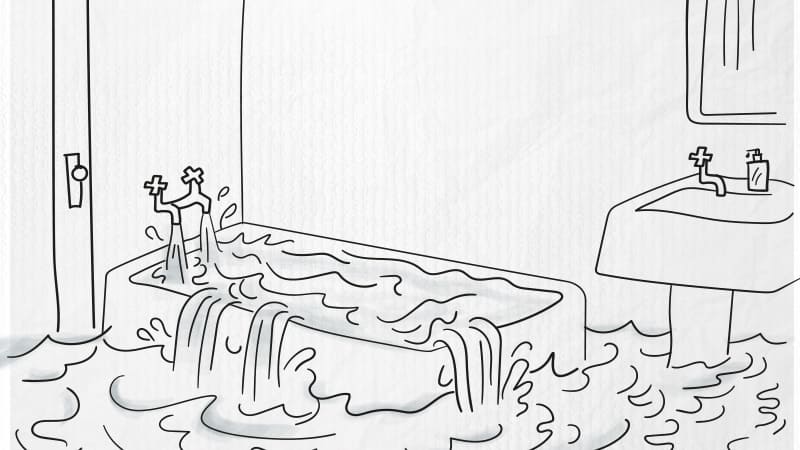
Interview: Demand Management is Like Spending Your Own Money


(Photo Credit: Jeremy Fry )
Demand Management has been around for many years. While it is relatively easy to explain the underlying concept of demand management within the framework of a company’s supply chain, it is not easy to implement it in real-life given the many complexities involved.
Jeremy Fry, a demand management expert working with Belgian advanced materials and specialty chemicals company Solvay, has his task cut out in balancing the demand that arises within the group’s worldwide business.
Business teams within a large organization have a plethora of needs ranging from replacement laptops to rental cars. How can these be properly balanced so that the total cost of ownership (TCO) does not shoot up or go beyond the set limits?
“Demand management is about challenging what we buy and how much, or even should we buy such to achieve sustainable spend reduction. It is about spending money as if it was your own,” Jeremy told Beroe.
When pressed to provide an analogy, Jeremy came up with an interesting image.
“Well, imagine an overflowing bathtub. When the bath is overflowing, Demand Management is about turning off the tap, taking out the plug, and ensuring that this does not happen again,” Jeremy explained with a hint of humor.

What are some of the challenges he faces when swamped with competing interests from his internal customers? How does he address them? He listed four different scenarios.
a). Avoid Quick Fixes Where Possible
Charlotte Cornemillot, another member of the team, chipped in.
“In travel and expenses, for example, travel ban is used as a quick fix, but you cannot cut travel forever. Our travelers need to travel smarter, finding alternatives where possible, say virtual meetings, and improving compliance to the set rules such as online booking, lowest fare, advance purchase, and so on,” she said.
b). Productivity
Jeremy then moved on to the question of managing productivity. He said productivity is an issue in the area of Maintenance. According to him, the challenge can be addressed by buying and holding the inventory that the company needs, and helping maintenance teams in their day-to-day productivity by introducing gatekeepers to prioritize critical maintenance activities.
c). Blurred Lines Between Want and Need
“In software applications, the difference between what users want and what the organization needs is blurry. When new employees join the company, instead of providing blanket access to all applications, we run a check on what licenses they actually need and provide permission only for those. Also, when employees leave the company, we ensure that all the individual licenses are deactivated. Time and again, we renegotiate with suppliers on these new requirements,” Jeremy said.
d). Lack of Visibility
“In Human Resources, for example, there is a lack of visibility on external resources, say temporary staff, contractors, or even consulting resources. We create transparency and challenge the status quo against benchmarks to adjust levels of internal vs. external resourcing based on the need for flexibility,” Jeremy explained.
He also raised an interesting point about how different functions within a company have different perspectives about category spend.
“Procurement teams look at spend from a category point of view; however, this category view remains irrelevant to other functions such as Operations or Finance. This means we need to integrate category initiatives in their projects to improve recognition from their perspective. Using the same language and metrics helps build a true collaborative environment, which is a key to demand management success,” Jeremy said.
Steps to Build a Collaborative Environment
Jeremy listed five steps to increase collaboration between Procurement and other functions such as Operations or Finance so as to make the demand management initiative a success.
- To begin with, create awareness and transparency regarding a specific set of purchasing categories by changing the methods of working. The aim is to create a positive impact on the efficiency of the organization and its bottom line, which will be noticed by other internal stakeholders.
- Spend transparency requires close collaboration between Operations (requestors), Finance, and Procurement to map each and every data point, and create one single version of the truth.
- The spend transparency then helps the demand management team to draw category specific levers for optimizing the spend while making it appealing to stakeholders with set Key Performance Indicators (KPIs) and Targets.
- Monitor and sustain the change by placing the supplier at the center of the universe, supported by digital initiatives where applicable.
- Lastly, a significant cost reduction -- say 10-15 percent -- needs to be reported while enjoying the same quality and service level. This will surely catch people’s attention and help win their trust in demand management programs.
Jeremy then conceded that gaining acceptance for his plan among internal stakeholders is easier said than done.
“Some transformation initiatives are generally accepted by all stakeholders despite having hard-to-reach goals. Whereas the initiative relating to demand management does not have that luxury -- operations do not often accept another external challenge. We have to show what’s in it for them by helping them to do more with less, to free up the money so that it could be productively spent elsewhere,” Jeremy elaborated.
He then added that it is better to stop convincing stakeholders beyond a certain point and instead start acting on the plan.
“When we get this right, everyone becomes a promoter of the initiative; right from the top management who will have much needed visibility on the overall spend, down to a maintenance operator who will experience an improvement in his daily job,” Jeremy said.
Learning
Jeremy listed some of the lessons learned based on his personal experience.
- Demand Management should not be a top down initiative.
- Failure is not an option -- customers do not pay for waste.
- Use the right language and metrics to change behavioral patterns.
- Demand management should be a mindset embedded in every organization and not only in business owners.
- Less demand often leads to more value.
At the end, when asked what he will tell his peers from other companies, Jeremy circled back to his bathtub analogy.
“I would like to pose a question: And YOU, is your bath overflowing? Do you have a grip on those purchase volumes?”
Related Insights:
View All
Get more stories like this
Subscirbe for more news,updates and insights from Beroe






